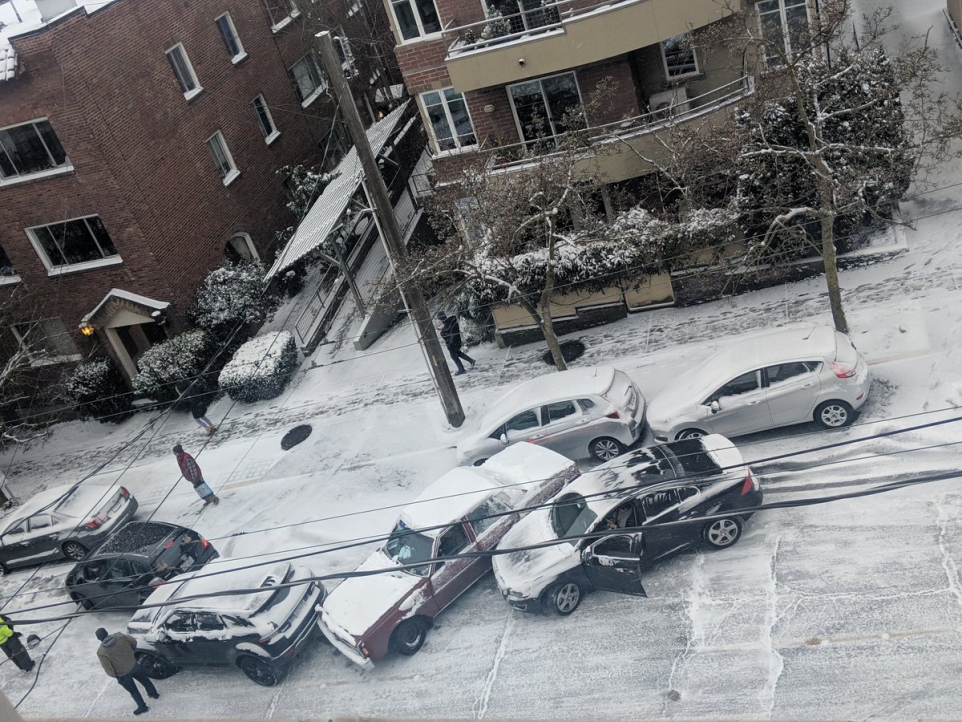Seattle’s Snow is finally melting. . . but its only the beginning of more problems.
For the second Tuesday in a row, snow hit Seattle. Governor Inslee was correct in ordering a state of emergency late last week in expectation of the weather severity. The snow of February 12th was wet and heavy, causing power outages and damage to cars and homes from collapsing tree limbs. Schools continued to be closed and road conditions continued to be dangerous. At least threats, if not the reality of flooding and landslides loom in the minds of residents. This is the snowiest month Seattle has seen in over 50 years.
Storm Damage Caused by Trees
The trouble with heavy snow on tree limbs besides the limbs collapsing and causing extensive damage to landing places like cars and roofs is that if they don’t collapse, when more supple, younger limbs are suddenly relieved from the weight of the heavy snow they spring up like elastic bands. Hitting power lines, they can cause widespread power outages.
Storm Damage Caused by Temperatures
As of now, the temperatures are still in the freezing range, especially at night. This makes for treacherous driving and walking conditions. Black ice is especially dangerous since you can’t see it. It can often make a surprise appearance careening your car into acrobatics you never expected it could do. Be extra cautious when the temperature is at freezing or below. When the temperatures rise, storm drains that haven’t been cleared will result in a deluge of water, flooding streets and basements. It seems that no matter what the temperature during snowstorms and their aftermath, there’s always added precaution to take with good reason.
Storm Damage- More Coming
The storm drain flooding works to combine as an added hazard with the melting snow which alone brings with it the threat of landslides. When the temperatures rise, and the snow melts, it adds quite a bit of moisture to the soil. If it gets saturated enough, the soil becomes unstable and landslides quickly turn from threat to reality.
What You Can Do
Make sure storm drains are cleared from snow and ice to help prevent flooding. Blocked storm drains can also be the cause of fires should they block household appliance vents like clothes dryers. It’s also a good idea to stay posted with up-to-date information on sites like Metro Winter for information on the best routes to take while many streets remain blocked and/or closed due to uncleared, fallen tree limbs. When you do venture out to drive, make sure your vehicle is cleared of ice and snow. Not only can it impair your own visibility, but if it comes off your vehicle in one large sheet it can damage other vehicles, and may even cause harm to pedestrians. Even light snow, wafting from your car or truck can cause another driver to be temporarily blinded. Even if only for seconds, it could mean the difference between having an accident and everyone getting to their destinations safely. Most states currently have laws preventing people from driving with any debris that can fall from vehicles, including ice and snow.
If you’re in an isolated area, possibly without power, and are in need of non-medical assistance, they have established a hotline. You can call them at 206-296-3830. Always use 911 for serious, immediate help. Just remember, Spring is right around the corner so if all of this anxiety and mess is making you a little melancholy, cheer up!








Leave A Comment